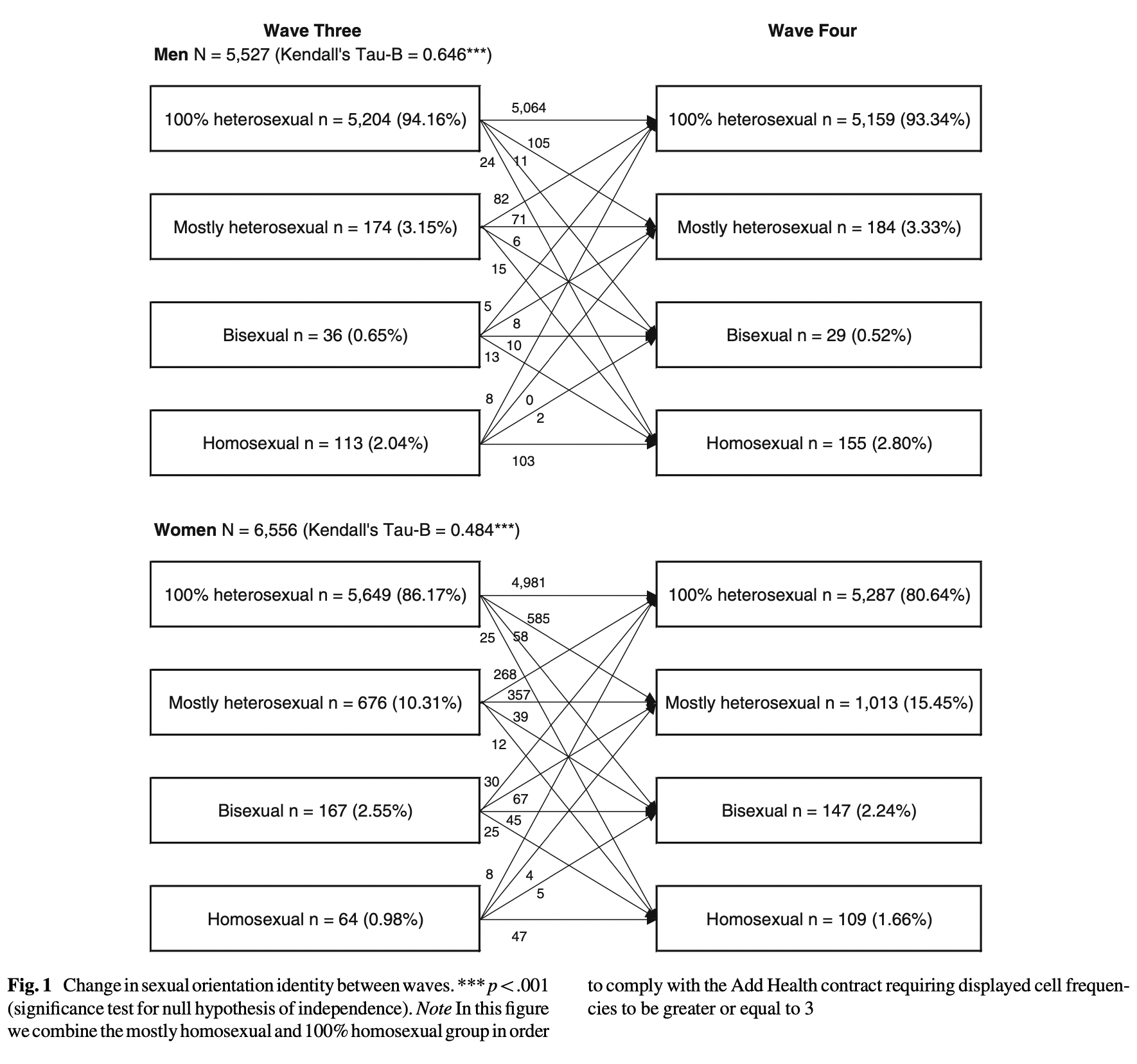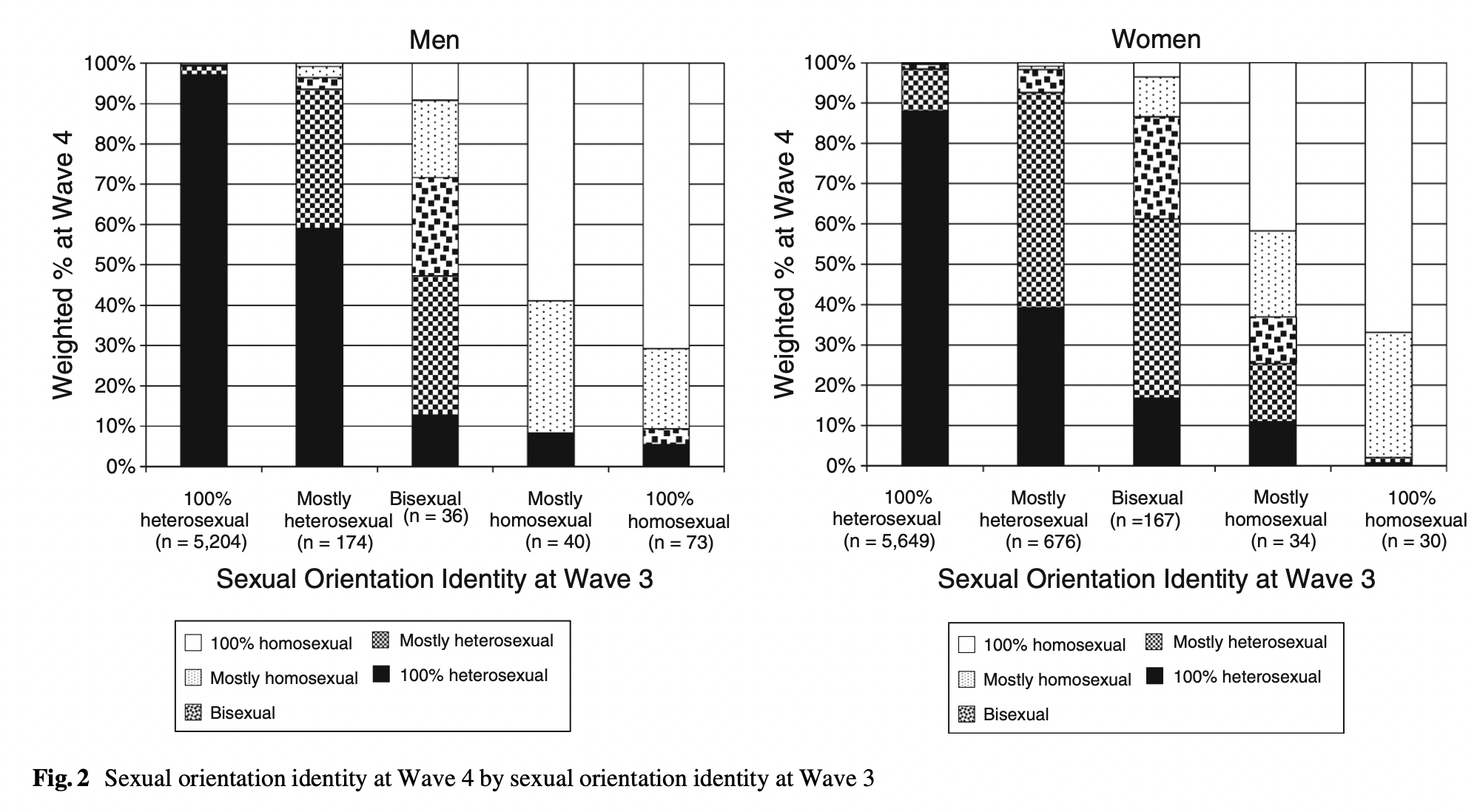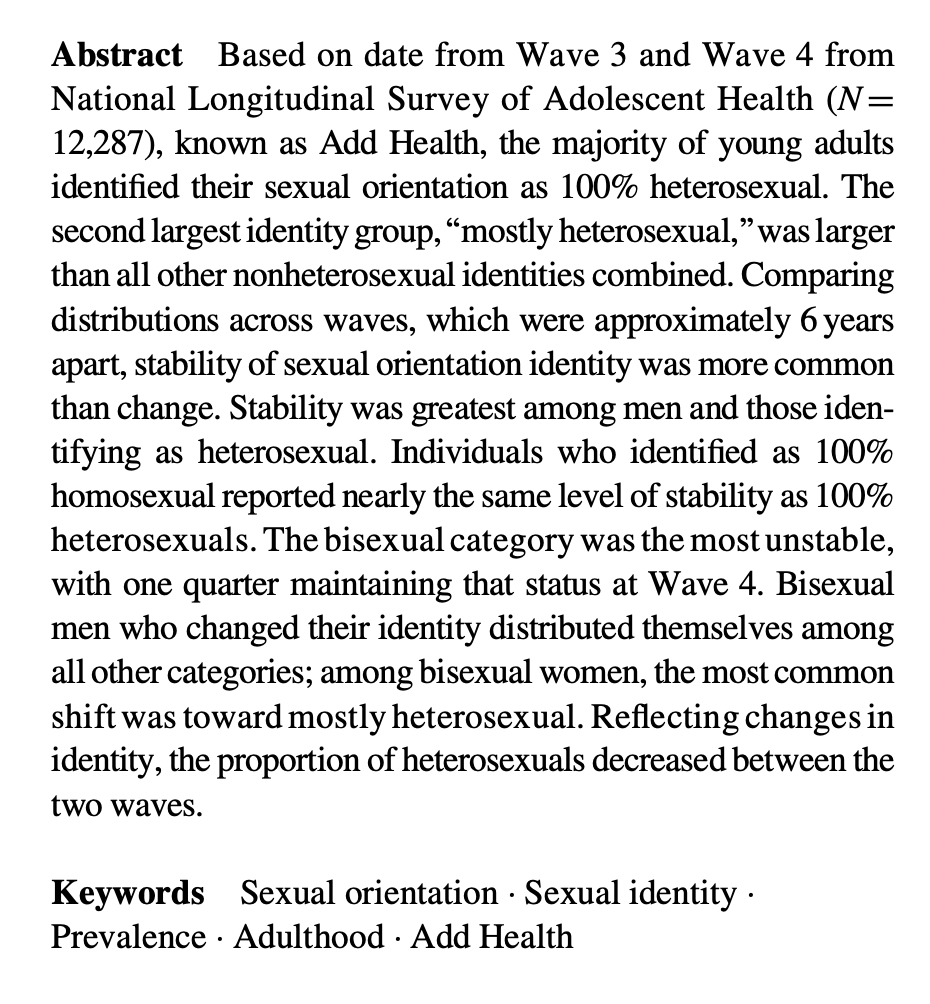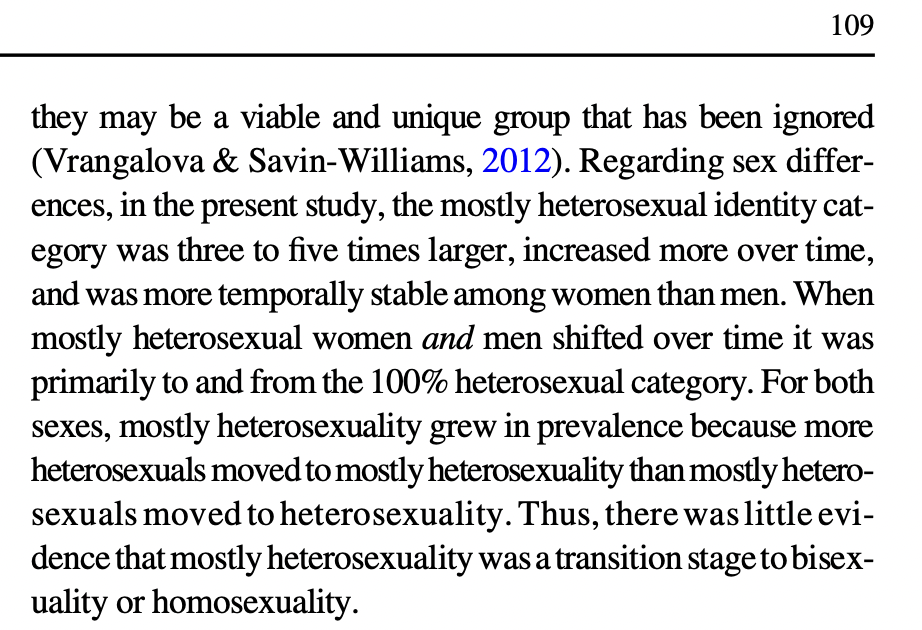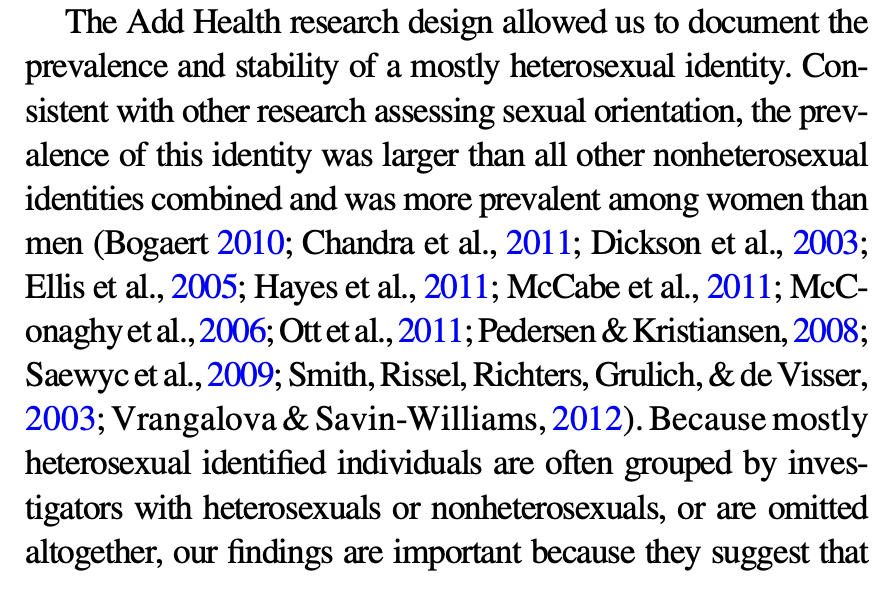Researchers at Cornell University analyze a 6 year cohort of 12,287 young adults and find significant shifts in self identification of their sexual orientation.
- Type
- Academic / Technical Report
- Source
- Ritch Savin-Williams Non-LDS
- Hearsay
- Direct
- Reference
Ritch C. Savin-Williams, "Prevalence and Stability of Self-Reported Sexual Orientation Identity During Young Adulthood," Archives of Sexual Behavior 41, no. 1 (February 2012): 103–110
- Scribe/Publisher
- Archives of Sexual Behavior
- People
- Ritch Savin-Williams
- Audience
- Reading Public
- Transcription
Abstract Based on date from Wave 3 and Wave 4 from National Longitudinal Survey of Adolescent Health (N = 12,287), known as Add Health, the majority of young adults identified their sexual orientation as 100% heterosexual. The second largest identity group,‘‘mostly heterosexual,’’was larger than all other nonheterosexual identities combined. Comparing distributions across waves, which were approximately 6 years apart, stability of sexual orientation identity was more common than change. Stability was greatest among men and those identifying as heterosexual. Individuals who identified as 100% homosexual reported nearly the same level of stability as 100% heterosexuals. The bisexual category was the most unstable, with one quarter maintaining that status at Wave 4. Bisexual men who changed their identity distributed themselves among all other categories; among bisexual women, the most common shift was toward mostly heterosexual. Reflecting changes in identity, the proportion of heterosexuals decreased between the two waves.
. . .
The Add Health research design allowed us to document the prevalence and stability of a mostly heterosexual identity. Con- sistent with other research assessing sexual orientation, the prev- alence of this identity was larger than all other nonheterosexual identities combined and was more prevalent among women than men (Bogaert 2010; Chandra et al., 2011; Dickson et al., 2003; Ellis et al., 2005; Hayes et al., 2011; McCabe et al., 2011; McC- onaghy et al., 2006; Ott et al., 2011; Pedersen & Kristiansen, 2008; Saewyc et al., 2009; Smith, Rissel, Richters, Grulich, & de Visser, 2003; Vrangalova & Savin-Williams, 2012). Because mostly heterosexual identified individuals are often grouped by inves- tigators with heterosexuals or nonheterosexuals, or are omitted altogether, our findings are important because they suggest that they may be a viable and unique group that has been ignored (Vrangalova & Savin-Williams, 2012). Regarding sex differ- ences, in the present study, the mostly heterosexual identity cat- egory was three to five times larger, increased more over time, and was more temporally stable among women than men. When mostly heterosexual women and men shifted over time it was primarily to and from the 100% heterosexual category. For both sexes, mostly heterosexuality grew in prevalence because more heterosexuals moved to mostly heterosexuality than mostly hetero- sexuals moved to heterosexuality. Thus, there was little evi- dence that mostly heterosexuality was a transition stage to bisex- uality or homosexuality.
. . .
- BHR Staff Commentary
- Citations in Mormonr Qnas
The B. H. Roberts Foundation is not owned by, operated by, or affiliated with the Church of Jesus Christ of Latter-day Saints.

